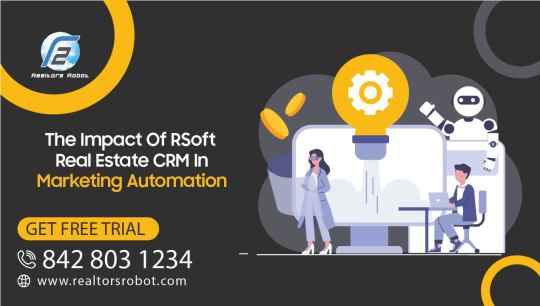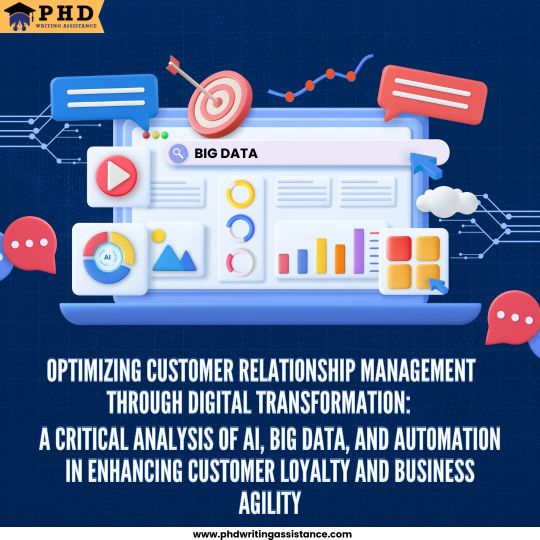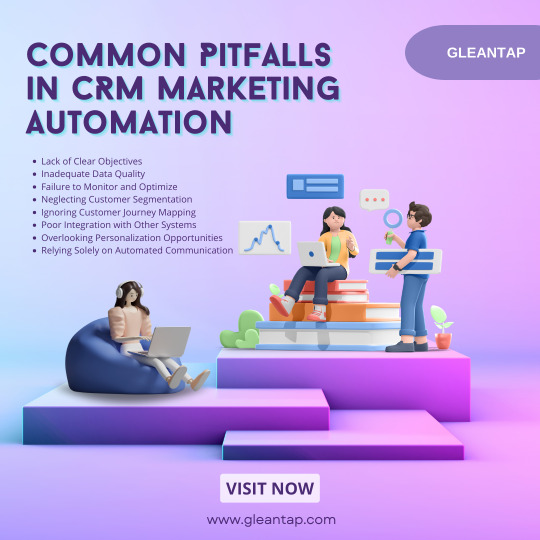#CRM Automation
Explore tagged Tumblr posts
Text
0 notes
Text

#CRM automation#AI in marketing#lead generation tools#customer interaction#CRM integration#Inkling AI#business automation#personalized marketing#customer satisfaction#CRM solutions#digital transformation#marketing technology#sales automation#customer experience#AI tools for business.
0 notes
Text
Integrating AI Call Transcription into Your VoIP or CRM System
In today’s hyper-connected business environment, customer communication is one of the most valuable assets a company possesses. Every sales call, support ticket, or service request contains rich data that can improve business processes—if captured and analyzed properly. This is where AI call transcription becomes a game changer. By converting voice conversations into searchable, structured text, businesses can unlock powerful insights. The real value, however, comes when these capabilities are integrated directly into VoIP and CRM systems, streamlining operations and enhancing customer experiences.
Why AI Call Transcription Matters
AI call transcription leverages advanced technologies such as Automatic Speech Recognition (ASR) and Natural Language Processing (NLP) to convert real-time or recorded voice conversations into text. These transcripts can then be used for:
Compliance and auditing
Agent performance evaluation
Customer sentiment analysis
CRM data enrichment
Automated note-taking
Keyword tracking and lead scoring
Traditionally, analyzing calls was a manual and time-consuming task. AI makes this process scalable and real-time.
Key Components of AI Call Transcription Systems
Before diving into integration, it’s essential to understand the key components of an AI transcription pipeline:
Speech-to-Text Engine (ASR): Converts audio to raw text.
Speaker Diarization: Identifies and separates different speakers.
Timestamping: Tags text with time information for playback syncing.
Language Modeling: Uses NLP to enhance context, punctuation, and accuracy.
Post-processing Modules: Cleans up the transcript for readability.
APIs/SDKs: Interface for integration with external systems like CRMs or VoIP platforms.
Common Use Cases for VoIP + CRM + AI Transcription
The integration of AI transcription with VoIP and CRM platforms opens up a wide range of operational enhancements:
Sales teams: Automatically log conversations, extract deal-related data, and trigger follow-up tasks.
Customer support: Analyze tone, keywords, and escalation patterns for better agent training.
Compliance teams: Use searchable transcripts to verify adherence to legal and regulatory requirements.
Marketing teams: Mine conversation data for campaign insights, objections, and buying signals.
Step-by-Step: Integrating AI Call Transcription into VoIP Systems
Step 1: Capture the Audio Stream
Most modern VoIP systems like Twilio, RingCentral, Zoom Phone, or Aircall provide APIs or webhooks that allow you to:
Record calls in real time
Access audio streams post-call
Configure cloud storage for call files (MP3, WAV)
Ensure that you're adhering to legal and privacy regulations such as GDPR or HIPAA when capturing and storing call data.
Step 2: Choose an AI Transcription Provider
Several commercial and open-source options exist, including:
Google Speech-to-Text
AWS Transcribe
Microsoft Azure Speech
AssemblyAI
Deepgram
Whisper by OpenAI (open-source)
When selecting a provider, evaluate:
Language support
Real-time vs. batch processing capabilities
Accuracy in noisy environments
Speaker diarization support
API response latency
Security/compliance features
Step 3: Transcribe the Audio
Using the API of your chosen ASR provider, submit the call recording. Many platforms allow streaming input for real-time use cases, or you can upload an audio file for asynchronous transcription.
Here’s a basic flow using an API:
python
CopyEdit
import requests
response = requests.post(
"https://api.transcriptionprovider.com/v1/transcribe",
headers={"Authorization": "Bearer YOUR_API_KEY"},
json={"audio_url": "https://storage.yourvoip.com/call123.wav"}
)
transcript = response.json()
The returned transcript typically includes speaker turns, timestamps, and a confidence score.
Step-by-Step: Integrating Transcription with CRM Systems
Once you’ve obtained the transcription, you can inject it into your CRM platform (e.g., Salesforce, HubSpot, Zoho, GoHighLevel) using their APIs.
Step 4: Map Transcripts to CRM Records
You’ll need to determine where and how transcripts should appear in your CRM:
Contact record timeline
Activity or task notes
Custom transcription field
Opportunity or deal notes
For example, in HubSpot:
python
CopyEdit
requests.post(
"https://api.hubapi.com/engagements/v1/engagements",
headers={"Authorization": "Bearer YOUR_HUBSPOT_TOKEN"},
json={
"engagement": {"active": True, "type": "NOTE"},
"associations": {"contactIds": [contact_id]},
"metadata": {"body": transcript_text}
}
)
Step 5: Automate Trigger-Based Actions
You can automate workflows based on keywords or intent in the transcript, such as:
Create follow-up tasks if "schedule demo" is mentioned
Alert a manager if "cancel account" is detected
Move deal stage if certain intent phrases are spoken
This is where NLP tagging or intent classification models can add value.
Advanced Features and Enhancements
1. Sentiment Analysis
Apply sentiment models to gauge caller mood and flag negative experiences for review.
2. Custom Vocabulary
Teach the transcription engine brand-specific terms, product names, or industry jargon for better accuracy.
3. Voice Biometrics
Authenticate speakers based on voiceprints for added security.
4. Real-Time Transcription
Show live captions during calls or video meetings for accessibility and note-taking.
Challenges to Consider
Privacy & Consent: Ensure callers are aware that calls are recorded and transcribed.
Data Storage: Securely store transcripts, especially when handling sensitive data.
Accuracy Limitations: Background noise, accents, or low-quality audio can degrade results.
System Compatibility: Some CRMs may require custom middleware or third-party plugins for integration.
Tools That Make It Easy
Zapier/Integromat: For non-developers to connect transcription services with CRMs.
Webhooks: Trigger events based on call status or new transcriptions.
CRM Plugins: Some platforms offer native transcription integrations.
Final Thoughts
Integrating AI call transcription into your VoIP and CRM systems can significantly boost your team’s productivity, improve customer relationships, and offer new layers of business intelligence. As the technology matures and becomes more accessible, now is the right time to embrace it.
With the right strategy and tools in place, what used to be fleeting conversations can now become a core part of your data-driven decision-making process.

#AI call transcription#VoIP integration#CRM integration#Speech-to-text software#Call transcription software#Real-time transcription#VoIP call recording#CRM automation#Customer call insights#Voice analytics#AI transcription for sales calls#Transcription in customer support#CRM call log automation#Automatic call summary#AI speech recognition tools#Sales call transcript analysis#Customer service call transcription#AI voice to text CRM#Call center compliance tools#Conversation intelligence software
0 notes
Text
How CRM Automation Can Enhance Sales Forecasting

In this blog, we’ll explore how CRM automation transforms sales forecasting into a powerful strategic advantage.
Read the full blog
#CRM automation#Sales forecasting#CRMLeaf features#Automated sales reports#Pipeline forecasting#CRM for sales teams#Revenue prediction CRM
0 notes
Text
Salesforce Einstein GPT for Smarter CRM | Advent IT Solution

Discover how Salesforce Einstein GPT brings the power of generative AI to CRM, transforming how businesses interact with customers. With AI-driven insights, automation, and personalized communication, Einstein GPT helps teams boost efficiency, close deals faster, and deliver exceptional experiences. Learn how Advent IT Solution implements this groundbreaking technology to elevate your customer relationships and drive business growth.
0 notes
Text
0 notes
Text
Automate Your Client Follow-Ups in 5 Minutes: AI-Powered Sales on Autopilot
Automate Your Client Follow-Ups in 5 Minutes AI-Powered Sales on Autopilot Picture this: You have a solid discovery call with a potential client. They’re excited, you’re excited, and then… nothing. The deal sits in limbo, collecting dust in your CRM because you got busy, life happened, and you forgot to follow up. Sound familiar? It happens to the best of us. But here’s the truth: Follow-up…
#AI email sequences#AI for entrepreneurs#AI in sales#AI marketing automation#AI personalization#AI sales assistant#AI sales tools#AI-driven email marketing#AI-driven follow-ups#AI-generated messages#AI-powered CRM#AI-powered sales#automated client follow-ups#automated lead management#business automation#Business Growth#business growth with AI#Business Strategy#client engagement#client retention automation#CRM automation#Entrepreneur#Entrepreneurship#follow-up emails#follow-up strategy#HubSpot automation#lead conversion#lead nurturing#Lori Brooks#Productivity
0 notes
Text

The Impact of RSoft Real Estate CRM In Marketing Automation
Discover how RSoft Real Estate CRM transforms marketing automation by streamlining campaigns, enhancing lead generation, and boosting client engagement for real estate agents
#RSoft Real Estate CRM#Marketing automation CRM#Real estate CRM benefits#CRM for lead generation#RSoft CRM features#Real estate marketing tools#CRM automation#Automated marketing real estate
0 notes
Text
Marqueeproject helps you develop intelligent, data-driven tools that help you up your business game. We specialize in tailoring strategic solutions that cater to your specific objectives. Whether you need to streamline operations or optimize customer interaction, we've got it all covered for you. Scale your business with our professionally designed CRM and Automation Tools to attain operational excellence.
0 notes
Text

Transform your business strategies with the power of AI, Big Data, and Automation! 🌐 Dive into how digital transformation is revolutionizing Customer Relationship Management (CRM) by enhancing customer loyalty and driving business agility. Discover how innovation is reshaping industries for a smarter tomorrow.
#Digital CRM#AI in CRM#Big data in CRM#CRM automation#Customer loyalty strategies#Predictive analytics in CRM#Personalized customer engagement
0 notes
Text
Fear The Consequences: FCC 1-to-1 Compliance, CRM Automation, and the Dangers of Aged Leads!

In the digital age, staying compliant with FCC regulations and leveraging CRM tools effectively is essential, especially for businesses dealing with customer outreach and lead management. In my latest video, "Fear The Consequences: FCC 1-to-1 Compliance, CRM Automation, and the Dangers of Aged Leads!," I explore the critical aspects of adhering to communication regulations, how CRM automation can help or hinder your strategy, and the hidden dangers associated with using aged leads.
What You’ll Learn in This Video
1. FCC 1-to-1 Compliance Understanding and complying with the FCC's 1-to-1 communication regulations is non-negotiable. In the video, I break down what these rules entail, how to remain compliant, and why non-compliance can lead to serious legal and financial consequences.
2. The Role of CRM Automation CRM automation is powerful but must be used carefully. I discuss how to integrate automation into your workflow while ensuring that your practices align with current compliance standards and do not compromise customer trust.
3. The Hidden Dangers of Aged Leads Using outdated or aged leads can be risky and costly for your business. I share insights into why these leads may hurt your marketing efforts, introduce potential compliance risks, and what steps you can take to refresh your approach for maximum impact.
Don’t Risk Your Business’s Reputation
This video provides practical advice for business owners, marketers, and sales professionals to protect themselves from pitfalls and understand how to adapt their strategies for 2024 and beyond. Ensuring compliance and updating your CRM strategies can make all the difference in safeguarding your operations.
For more valuable resources and industry insights, visit my website at Final Expense Telesales Pro.
0 notes
Text

Gleantap is a CRM marketing automation platform designed for the fitness industry. It provides personalized marketing campaigns, lead tracking, and sales automation tools to help gyms and fitness studios streamline their marketing efforts and boost customer engagement. Its user-friendly interface and customer support make it a valuable tool for fitness businesses of all sizes looking to grow their customer base and increase revenue.
0 notes
Text
Mastering Customer Relationships with Leadqart CRM Automation and Software
In the dynamic world of business, customer relationships are the lifeblood of success. The ability to connect, engage, and retain customers is what sets thriving businesses apart from the competition. To master this crucial aspect, many companies turn to Customer Relationship Management (CRM) solutions, and when paired with advanced automation and software, the results can be nothing short of spectacular. In this blog, we'll explore how Leadqart CRM automation and software can help you achieve mastery in customer relationships.
The Modern Challenge: Customer Relationship Management
Customer Relationship Management is more than just a buzzword; it's a strategic approach to managing interactions with current and potential customers. Traditionally, CRM was a manual process involving spreadsheets, emails, and a significant amount of human effort. However, as businesses grew, managing customer relationships became increasingly complex. That's where CRM automation and software come into play.
What is Leadqart CRM Automation and Software?
Leadqart CRM Automation and Software is a comprehensive solution designed to streamline and enhance customer relationship management. It combines the power of advanced CRM capabilities with automation features, allowing businesses to automate routine tasks, manage leads, and provide personalized interactions with ease.
Here's how you can master customer relationships with Leadqart CRM Automation and Software:
1. Data Management Made Effortless
Customer data is the cornerstone of any CRM strategy, and its accuracy is paramount. Leadqart CRM Automation and Software ensures your customer data is always up-to-date, reducing the risk of errors associated with manual data entry.
2. Lead Nurturing and Scoring
Identifying potential customers and nurturing leads is a critical aspect of CRM. With Leadqart, you can automate lead scoring based on interactions and behaviors, enabling your sales team to focus their efforts on the most promising prospects.
3. Automated Communication
Timely and relevant communication with leads is a key factor in successful conversions. Leadqart allows you to set up automated email sequences and messages triggered by specific lead interactions, ensuring consistent follow-ups.
4. Personalization at Scale
To truly master customer relationships, you need personalization. Leadqart's data-driven insights enable you to create highly personalized content and offers that resonate with your customers, making them feel valued and understood.
5. Real-time Insights
Understanding your customer's needs and preferences is essential. Leadqart CRM Automation and Software provide real-time insights and analytics, enabling you to make data-driven decisions and tailor your strategies accordingly.
6. Integration for a Seamless Workflow
Leadqart can integrate seamlessly with other tools and software you use in your business, such as email marketing platforms, e-commerce systems, and analytics tools. This ensures a smooth and cohesive workflow.
7. Exceptional Customer Support
With automated ticketing systems and chatbots, you can provide faster responses and more efficient customer support. This leads to improved customer satisfaction and trust.
Conclusion: Your Path to Mastery
Customer relationships are a multifaceted and critical aspect of any business. By embracing Leadqart CRM Automation and Software, you're well on your way to mastering these relationships. Your data management becomes effortless, lead nurturing and scoring are more effective, and communication is timely and personalized. Real-time insights and integration capabilities provide a comprehensive view of your customers and ensure a seamless workflow.
In conclusion, Leadqart CRM Automation and Software provide you with the tools you need to master customer relationships in the modern business landscape. They are your secret weapons for achieving higher conversion rates, increased customer satisfaction, and sustainable success. Embrace this powerful combination, and watch your customer relationships flourish like never before.
0 notes
Text
Ganesh Shankar, CEO & Co-Founder of Responsive – Interview Series
New Post has been published on https://thedigitalinsider.com/ganesh-shankar-ceo-co-founder-of-responsive-interview-series/
Ganesh Shankar, CEO & Co-Founder of Responsive – Interview Series


Ganesh Shankar, CEO and Co-Founder of Responsive, is an experienced product manager with a background in leading product development and software implementations for Fortune 500 enterprises. During his time in product management, he observed inefficiencies in the Request for Proposal (RFP) process—formal documents organizations use to solicit bids from vendors, often requiring extensive, detailed responses. Managing RFPs traditionally involves multiple stakeholders and repetitive tasks, making the process time-consuming and complex.
Founded in 2015 as RFPIO, Responsive was created to streamline RFP management through more efficient software solutions. The company introduced an automated approach to enhance collaboration, reduce manual effort, and improve efficiency. Over time, its technology expanded to support other complex information requests, including Requests for Information (RFIs), Due Diligence Questionnaires (DDQs), and security questionnaires.
Today, as Responsive, the company provides solutions for strategic response management, helping organizations accelerate growth, mitigate risk, and optimize their proposal and information request processes.
What inspired you to start Responsive, and how did you identify the gap in the market for response management software?
My co-founders and I founded Responsive in 2015 after facing our own struggles with the RFP response process at the software company we were working for at the time. Although not central to our job functions, we dedicated considerable time assisting the sales team with requests for proposals (RFPs), often feeling underappreciated despite our vital role in securing deals. Frustrated with the lack of technology to make the RFP process more efficient, we decided to build a better solution. Fast forward nine years, and we’ve grown to nearly 500 employees, serve over 2,000 customers—including 25 Fortune 100 companies—and support nearly 400,000 users worldwide.
How did your background in product management and your previous roles influence the creation of Responsive?
As a product manager, I was constantly pulled by the Sales team into the RFP response process, spending almost a third of my time supporting sales instead of focusing on my core product management responsibilities. My two co-founders experienced a similar issue in their technology and implementation roles. We recognized this was a widespread problem with no existing technology solution, so we leveraged our almost 50 years of combined experience to create Responsive. We saw an opportunity to fundamentally transform how organizations share information, starting with managing and responding to complex proposal requests.
Responsive has evolved significantly since its founding in 2015. How do you maintain the balance between staying true to your original vision and adapting to market changes?
First, we’re meticulous about finding and nurturing talent that embodies our passion – essentially cloning our founding spirit across the organization. As we’ve scaled, it’s become critical to hire managers and team members who can authentically represent our core cultural values and commitment.
At the same time, we remain laser-focused on customer feedback. We document every piece of input, regardless of its size, recognizing that these insights create patterns that help us navigate product development, market positioning, and any uncertainty in the industry. Our approach isn’t about acting on every suggestion, but creating a comprehensive understanding of emerging trends across a variety of sources.
We also push ourselves to think beyond our immediate industry and to stay curious about adjacent spaces. Whether in healthcare, technology, or other sectors, we continually find inspiration for innovation. This outside-in perspective allows us to continually raise the bar, inspiring ideas from unexpected places and keeping our product dynamic and forward-thinking.
What metrics or success indicators are most important to you when evaluating the platform’s impact on customers?
When evaluating Responsive’s impact, our primary metric is how we drive customer revenue. We focus on two key success indicators: top-line revenue generation and operational efficiency. On the efficiency front, we aim to significantly reduce RFP response time – for many, we reduce it by 40%. This efficiency enables our customers to pursue more opportunities, ultimately accelerating their revenue generation potential.
How does Responsive leverage AI and machine learning to provide a competitive edge in the response management software market?
We leverage AI and machine learning to streamline response management in three key ways. First, our generative AI creates comprehensive proposal drafts in minutes, saving time and effort. Second, our Ask solution provides instant access to vetted organizational knowledge, enabling faster, more accurate responses. Third, our Profile Center helps InfoSec teams quickly find and manage security content.
With over $600 billion in proposals managed through the Responsive platform and four million Q&A pairs processed, our AI delivers intelligent recommendations and deep insights into response patterns. By automating complex tasks while keeping humans in control, we help organizations grow revenue, reduce risk, and respond more efficiently.
What differentiates Responsive’s platform from other solutions in the industry, particularly in terms of AI capabilities and integrations?
Since 2015, AI has been at the core of Responsive, powering a platform trusted by over 2,000 global customers. Our solution supports a wide range of RFx use cases, enabling seamless collaboration, workflow automation, content management, and project management across teams and stakeholders.
With key AI capabilities—like smart recommendations, an AI assistant, grammar checks, language translation, and built-in prompts—teams can deliver high-quality RFPs quickly and accurately.
Responsive also offers unmatched native integrations with leading apps, including CRM, cloud storage, productivity tools, and sales enablement. Our customer value programs include APMP-certified consultants, Responsive Academy courses, and a vibrant community of 1,500+ customers sharing insights and best practices.
Can you share insights into the development process behind Responsive’s core features, such as the AI recommendation engine and automated RFP responses?
Responsive AI is built on the foundation of accurate, up-to-date content, which is critical to the effectiveness of our AI recommendation engine and automated RFP responses. AI alone cannot resolve conflicting or incomplete data, so we’ve prioritized tools like hierarchical tags and robust content management to help users organize and maintain their information. By combining generative AI with this reliable data, our platform empowers teams to generate fast, high-quality responses while preserving credibility. AI serves as an assistive tool, with human oversight ensuring accuracy and authenticity, while features like the Ask product enable seamless access to trusted knowledge for tackling complex projects.
How have advancements in cloud computing and digitization influenced the way organizations approach RFPs and strategic response management?
Advancements in cloud computing have enabled greater efficiency, collaboration, and scalability. Cloud-based platforms allow teams to centralize content, streamline workflows, and collaborate in real time, regardless of location. This ensures faster turnaround times and more accurate, consistent responses.
Digitization has also enhanced how organizations manage and access their data, making it easier to leverage AI-powered tools like recommendation engines and automated responses. With these advancements, companies can focus more on strategy and personalization, responding to RFPs with greater speed and precision while driving better outcomes.
Responsive has been instrumental in helping companies like Microsoft and GEODIS streamline their RFP processes. Can you share a specific success story that highlights the impact of your platform?
Responsive has played a key role in supporting Microsoft’s sales staff by managing and curating 20,000 pieces of proposal content through its Proposal Resource Library, powered by Responsive AI. This technology enabled Microsoft’s proposal team to contribute $10.4 billion in revenue last fiscal year. Additionally, by implementing Responsive, Microsoft saved its sellers 93,000 hours—equivalent to over $17 million—that could be redirected toward fostering stronger customer relationships.
As another example of Responsive providing measurable impact, our customer Netsmart significantly improved their response time and efficiency by implementing Responsive’s AI capabilities. They achieved a 10X faster response time, increased proposal submissions by 67%, and saw a 540% growth in user adoption. Key features such as AI Assistant, Requirements Analysis, and Auto Respond played crucial roles in these improvements. The integration with Salesforce and the establishment of a centralized Content Library further streamlined their processes, resulting in a 93% go-forward rate for RFPs and a 43% reduction in outdated content. Overall, Netsmart’s use of Responsive’s AI-driven platform led to substantial time savings, enhanced content accuracy, and increased productivity across their proposal management operations.
JAGGAER, another Responsive customer, achieved a double-digit win-rate increase and 15X ROI by using Responsive’s AI for content moderation, response creation, and Requirements Analysis, which improved decision-making and efficiency. User adoption tripled, and the platform streamlined collaboration and content management across multiple teams.
Where do you see the response management industry heading in the next five years, and how is Responsive positioned to lead in this space?
In the next five years, I see the response management industry being transformed by AI agents, with a focus on keeping humans in the loop. While we anticipate around 80 million jobs being replaced, we’ll simultaneously see 180 million new jobs created—a net positive for our industry.
Responsive is uniquely positioned to lead this transformation. We’ve processed over $600 billion in proposals and built a database of almost 4 million Q&A pairs. Our massive dataset allows us to understand complex patterns and develop AI solutions that go beyond simple automation.
Our approach is to embrace AI’s potential, finding opportunities for positive outcomes rather than fearing disruption. Companies with robust market intelligence, comprehensive data, and proven usage will emerge as leaders, and Responsive is at the forefront of that wave. The key is not just implementing AI, but doing so strategically with rich, contextual data that enables meaningful insights and efficiency.
Thank you for the great interview, readers who wish to learn more should visit Responsive,
#000#adoption#agents#ai#AI AGENTS#ai assistant#AI-powered#amp#Analysis#approach#apps#automation#background#billion#CEO#Cloud#cloud computing#cloud storage#collaborate#Collaboration#Community#Companies#comprehensive#computing#content#content management#content moderation#courses#crm#customer relationships
7 notes
·
View notes
Text
What is a CRM, and Why Does Every Business Need One?

Understand the power of crm and why businesses rely on crmLeaf to manage leads, streamline tasks, and grow stronger customer connections.
Read the full blog
1 note
·
View note
Text

Apnalead CRM – Your All-in-One Solution to Convert More Leads, Faster
2 notes
·
View notes